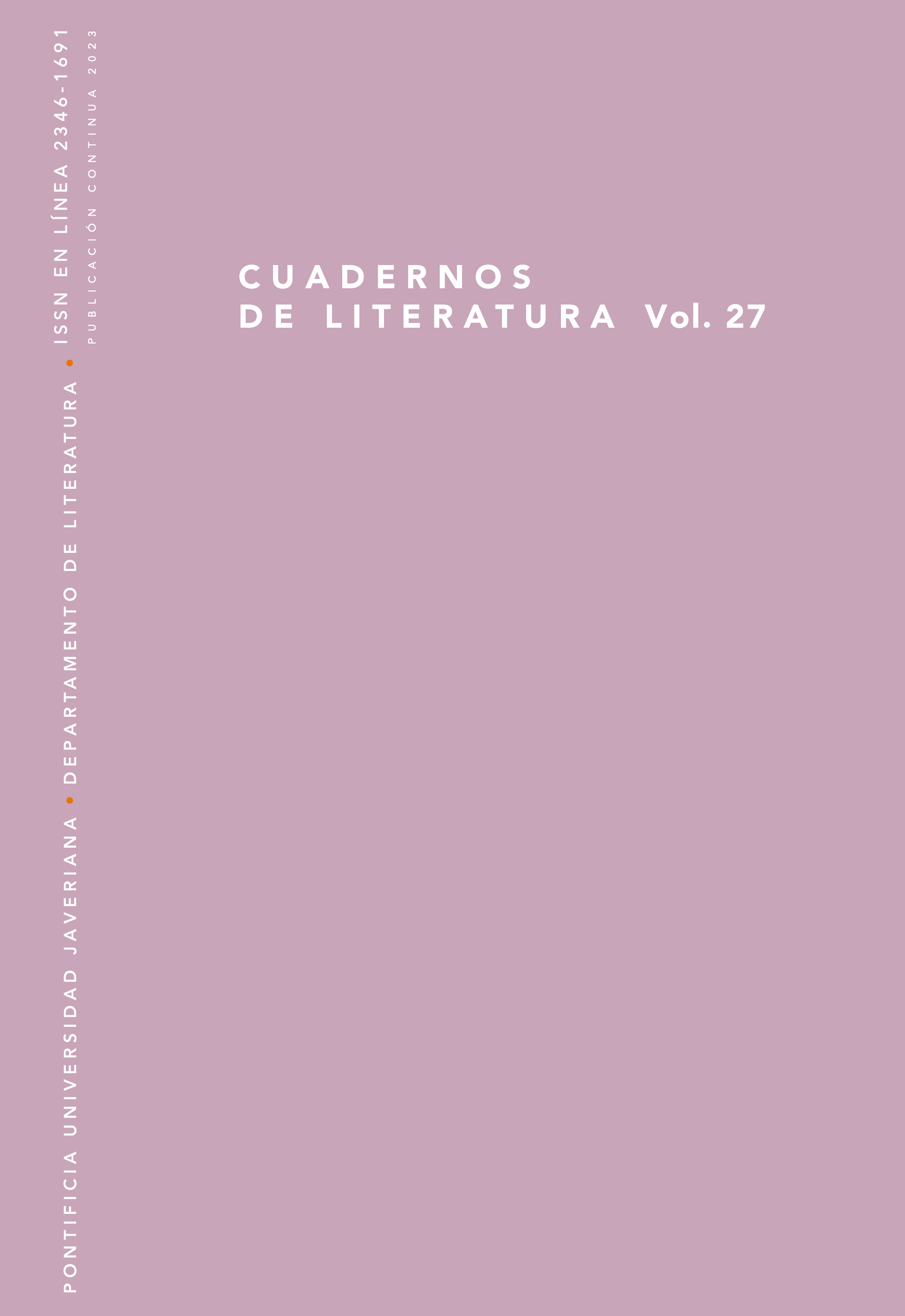Abstract
The relationship between hands and instruments allows us to understand why women have been more on the side of the body and men on the side of technique and technology. The emergence of each machine has only affirmed this distribution, so we can see it with the typewriters that impacted on the division of intellectual labor because women were limited to driving the machines, not registering their own creations. In this essay, I propose that these two drifts become complicated in Clarice Lispector’s writing, specifically in the character of Macabea in whom her imaginary and material course is interrupted.
Barthes, Roland. “Una relación casi maniaca con los instrumentos de gráfico (1973)”. El grano de la voz. Entrevistas 1962-1980, Siglo XXI, 1985, pp. 154-158.
Gallo, Rubén. Máquinas de vanguardia. Traducido por Valeria Luiselli, Sexto Piso, 2014.
Huyssen, Andreas. “La vamp y la máquina”. Después de la gran división, Adriana Hidalgo, 2002, pp. 123-151.
Kittler, Friedrich. Gramophone Film Typewriter. Stanford University Press, 1999.
Lispector, Clarice. La hora de la estrella. Siruela, 2011.
---. “La mujer más pequeña del mundo”. Cuentos reunidos, Siruela, 2013, pp. 88-94. Ozick, Cynthia. “Dictado”. Cuentos reunidos. Traducido por Eugenia Vásquez Nacarino, Lumen, 2008.
Lyons, Martyn. “QWERTYUIOP: La influencia de la máquina de escribir sobre las prácticas de escritura”. Un mundo de escrituras. Aportes a la historia de la cultura escrita, compilado por Martyn Lyons y Rita Marquilhas, Ampersand, 2018, pp. 247-272.
Price, Leah y Pamela Thurschwell. Literary Secretaries / Secretarial Culture. Ashgate, 2005.
Süssekind, Flora. Cinematografo de letras. 1987. Ediciones mimesis, 2021.
Tabet, Paola. “Las manos, los instrumentos, las armas”. Los dedos cortados, Universidad Nacional de Colombia, 2018, pp. 189-251.
Zafra, Remedios. (h)adas. Mujeres que crean, programan, prosumen, teclean. Páginas de espuma, 2013.
Cuadernos de Literatura is registered under a Creative Commons Attribution 4.0 International Public License. Thus, this work may be reproduced, distributed, and publicly shared in digital format, as long as the names of the authors and Pontificia Universidad Javeriana are acknowledged. Others are allowed to quote, adapt, transform, auto-archive, republish, and create based on this material, for any purpose (even commercial ones), provided the authorship is duly acknowledged, a link to the original work is provided, and it is specified if changes have been made. Pontificia Universidad Javeriana does not hold the rights of published works and the authors are solely responsible for the contents of their works; they keep the moral, intellectual, privacy, and publicity rights.
Approving the intervention of the work (review, copy-editing, translation, layout) and the following outreach, are granted through an use license and not through an assignment of rights. This means the journal and Pontificia Universidad Javeriana cannot be held responsible for any ethical malpractice by the authors. As a consequence of the protection granted by the use license, the journal is not required to publish recantations or modify information already published, unless the errata stems from the editorial management process. Publishing contents in this journal does not generate royalties for contributors.


